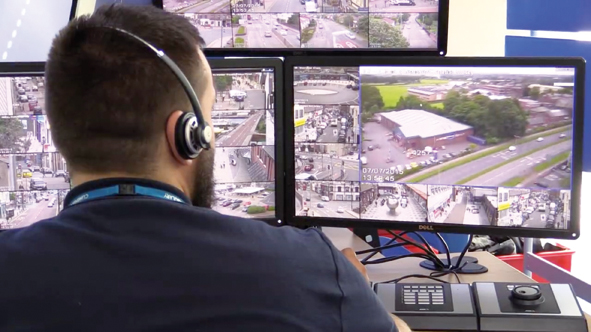BTP and Network Rail take off with Airwave
A joint collaboration between British Transport Police (BTP) and Network Rail has resulted in the successful implementation of the Airwave service into two service helicopters

A joint collaboration between British Transport Police (BTP) and Network Rail has resulted in the successful implementation of the Airwave service into two service helicopters.
The trial, which commenced 12 months ago, involved the installation of the radio equipment (cradle and handsets on loan from BTP) in the Network Rail helicopters assigned with the task of conducting track surveys and special operations.
Prior to the installation of the Airwave service, the helicopters would communicate with their control room using a satellite phone, explained Stuart Bines, communications and training officer at BTP. However, the coverage was often sketchy and did not integrate with our control rooms. In practice this would mean that for a mutual aid operation, their control room would have to call us, which could delay the response time.
With both organisations increasing their activities to tackle cable theft across the UK, it became apparent that access to the secure network used by the emergency services was essential to help with more direct communications.
In conjunction with the installation of the radio equipment in the helicopters, a fixed desktop has been installed at Network Rails National Operations Centre to allow integrated communications between the helicopters and BTP.
The helicopter users have access to our sharers hailing talk group, which facilitates direct communication with our control room. Our operators can then immediately deploy the necessary officers in response to the information received, adds Mr Bines.
Users also have access to the BTP air-to-ground talk group and the BTP interoperability talk group to allow communication with units on the ground if they are at the scene of a major incident or on pre-planned operations.
All BTP-trained air observers have been issued with separate handsets to connect to the Airwave network for pre-planned operations when they accompany Network Rail in the helicopters.
Network Rail has already introduced a flying app to help deliver a faster emergency response.
The smartphone application. Where Am I?, links Network Rails helicopters to engineers and emergency services, using GPS to pinpoint locations to an accuracy of 5m.
Created by Network Rails asset information team, the system means air crews surveying the 20,000-mile railway network can find a location and send it to ground-based teams in a variety of formats, including the post codes used by the emergency services, grid references used by helicopters and the railways own mileage-based line reference.
Developed in time for the Olympic Games, when the helicopters were patrolling Olympic stations and routes, it proved its worth in July 2012 when a helicopter crew was able to direct police to a location in London where lasers had been allegedly targeting aircraft.
The accuracy of the app means that problems can be identified and crews directed to locations to within 5m. Network Rails says that in complex locations and in cities where a swift response is needed to fix problems, it can make a big difference.
Airwave has also been working with the Highways Agency to replace voice messages with data transmissions. The programme makes greater use of the capabilities associated with the Airwave TETRA radio terminals used by the organisation.



